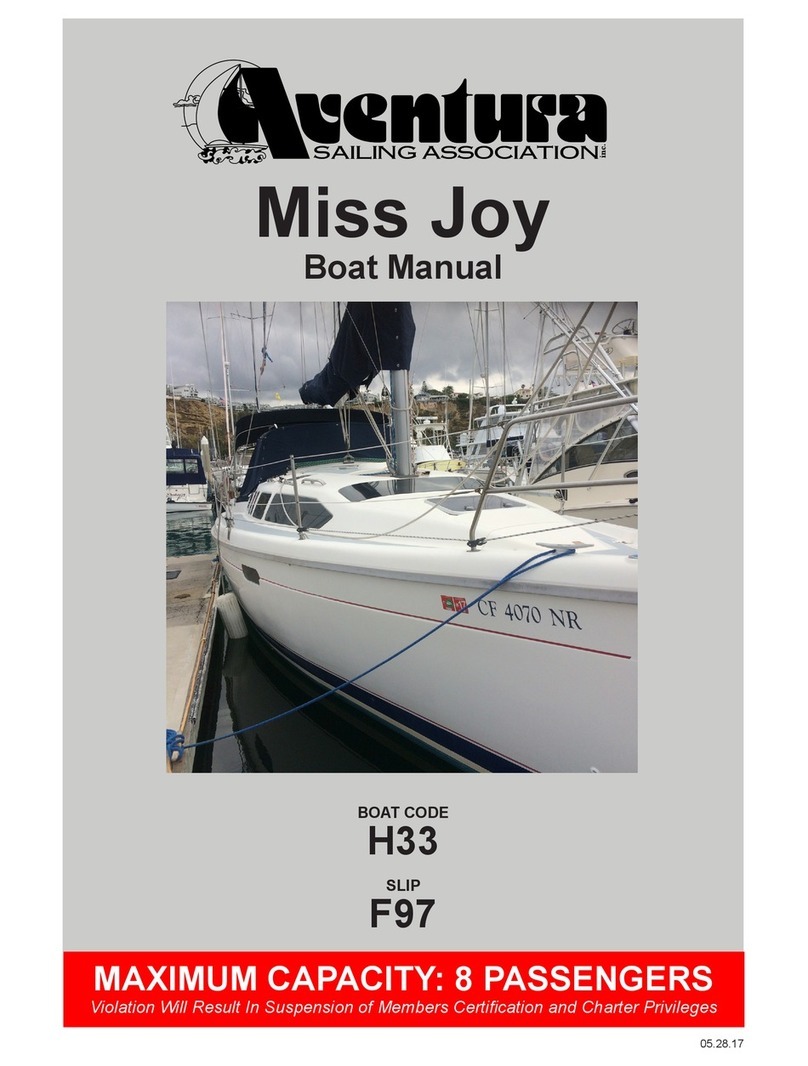
Tankage
Water Tank
Capacity: 75 Gallons
Tank Location: Under V-Berth
Fill Fitting Location: Starboard, aft of bow anchor locker
NOTE: Be certain the water tank is lled prior to departure. If the water heater is not
full of water, damage to the heating elements may result when the electrical power
is turned on to the unit. Head is a fresh water ush system.
Diesel Fuel Tank
Capacity: 35 Gallons Diesel
Tank Location: Aft stateroom under bunk.
Fill Fitting Location: Outside cockpit, aft starboard combing
NOTE: Remove ll cap slowly and hold it rmly so as not lose it overboard should
the tether line break.
Do Not Leave Fuel Filler Nozzle Unattended When Fueling!
Holding Tank
Capacity: 20 Gallons
Tank Location: In head behind aft bulkhead removable panel.
Pump-Out Fitting Location: Outside cockpit, aft port.
Empty Holding Tank
at Sea
Once located 3 miles from shore you can empty the holding tank at sea. Tank
is gravity ush, ushing toilet macerates solids. Locate the holding tank through
hull behind the head aft wall panel, low. Turn sea cock until it’s parallel with hose.
Tank should empty completely in 5 minutes.
General
Head
Fresh water electric ush marine toilet, turn on water pump at electrical panel. Be
sure water tank is lled before departure.
On the right side of the bowl are two switches. The top switch is for rinsing out the
bowl. The bottom switch when pushed on left side lls the bowl with water, when
pushed on the right side drains the bowl and macerates simultaneously.
NOTE: Nothing goes in toilet bowl that has not been consumed rst except
marine toilet paper!
Bilge Pump
Manual Bilge Pump: Located under the cockpit seat (port aft of the helm).
Automatic Bilge Pump: Switch located in the electrical panel. Pump located under
cabin sole at the bottom of companionway stairs
Refrigerator DC switch on the electrical panel.
Stove
Propane, tank in the cockpit starboard, aft lazarette. Safety solenoid switch is
below galley sink.
Anchor Locker To access Anchor Locker, release and pull back Spinnaker pole.
Propeller It has a tri-blade folding propeller with virtually no prop walk. Because it’s a folding
prop it will not charge batteries while sailing
5





























